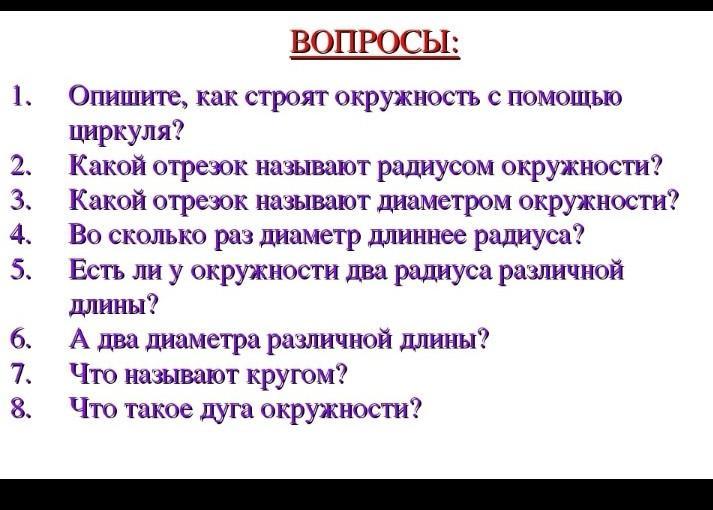Предмет: Математика,
автор: Dedagenn2
помогите пожалуйста прошу
Приложения:

Ответы
Автор ответа:
0
Ответ:
Пошаговое объяснение:
1). Ставится точка, это будет центр окружности . Иглу циркуля ставим в эту точку , выбираем нужный размер и чертим окружность .
2). Отрезок , который соединяет центр окружности и любую точку , которая лежит на окружности - называют радиусом .
3). Диаметр окружности это отрезок , который соединяет две точки , которые лежат на этой окружности и проходит через центр окружности .
4). Диаметр равен двум радиусам, значит он в 2 раза больше радиуса.
5). У окружности не может быть двух радиусов разной длины.
6). И не может быть двух диаметров разной длины .
7). Круг это часть плоскости ограниченная окружностью.
8). Две точки на окружности делят ее на 2 части . Каждая из этих частей и будет дугой окружности .
Похожие вопросы
Предмет: Українська мова,
автор: yanahabarlak
Предмет: Русский язык,
автор: Dasha0303000
Предмет: Английский язык,
автор: Аноним
Предмет: Физика,
автор: маквін